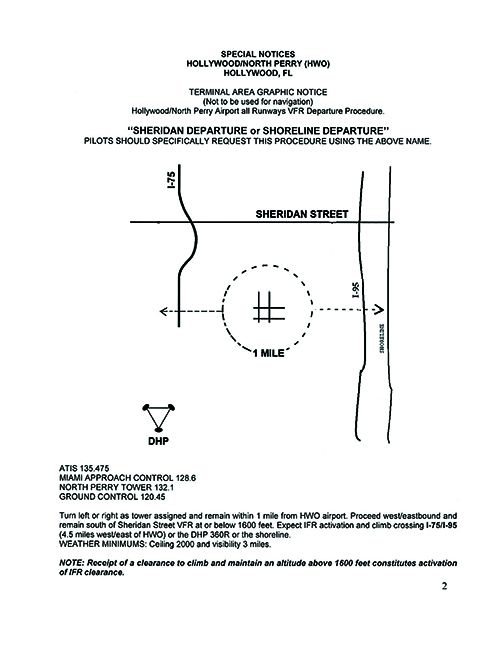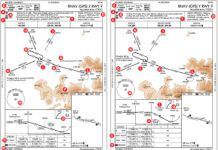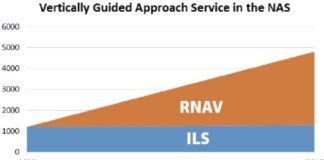One of the ways the FAA manages many things without creating new regulations is through Letters of Agreement (LOAs). There are many types of LOAs but one creates clarity among Air Traffic Control facilities regarding who controls what. In theory, they eliminate ambiguity amongst the parties involved. Sometimes LOAs also affect pilots and the issue is that few LOAs are readily available, making it rather difficult for pilots to find out.
Now, we’ve been referencing LOAs on these pages for years. Most of the time they’re innocuous and we pilots might have little need or interest in knowing them. This includes perhaps the most common LOA, that between a Center and a TRACON that specifies how each is to route traffic to the other. Typically, this involves gates, altitudes, speeds, and in-trail spacing.
At other times, though, these little-known agreements essentially amount to nearly unpublished procedures that we, indeed, could benefit from knowing. And following.

Sheridan Departure
Several months ago, I was with an instrument student in his Mooney Bravo at Hollywood, FL (KHWO) which uses the name, North Perry Airport, for ATC communications. This general aviation airport is located south of Fort Lauderdale-Hollywood International Airport (KFLL) and north of Miami International Airport (KMIA) and dates back to WWII as North Perry Field (named after a dairy farmer, Henry D. Perry). It was an auxiliary training facility for the Miami Naval Air Station at the Opa Locka, FL airport (KOPF) six nautical miles to the south.
While North Perry is an airport that is close to my home base, I typically don’t use it. But on this day, we did an instrument approach into North Perry, refueled, and filed an instrument flight plan to Stuart Airport (KSUA) approximately 71 NM north. Of course, we know that we would not be able to go directly north because of the large number of airports along the way including KFLL.
We received the clearance and we had to wait for release. Five minutes, 10, 15 minutes go by. We queried Ground Control regarding an expected release time. Well the ground controller was not too helpful and pointed to Miami Approach, the controlling ATC facility, as the culprit.
I knew what the problem was because I could see it with ADS-B traffic. It was an arrival push at FLL which was using east approaches, so we would be interfering with the right (southern) and left (northern) downwinds along with the finals to Runways 10R and 10L. I was always expecting to be vectored directly west, then eventually to the north to avoid any traffic conflicts. Oh, did I not mention that it was MVFR, not a terribly bad weather day with stratus clouds, but a type of day when (as they say) only three things are airborne: airliners, birds, and fools? You can guess who we were. I decided to depart VFR. Tower told us to squawk 1200, and cleared us for take-off on Runway 36L.
My intention was to fly west, then contact Miami Departure. Just as we were on the take-off roll, Tower told us to switch back to the original IFR squawk code and contact Departure after takeoff. Not sure what prompted that; perhaps Departure figured out
that they would be talking to us anyway in short order. And that was it. The rest of the training flight was routine.
Believe it or not, about three weeks later, I was with another instrument student, also with his Mooney Bravo at North Perry with similar weather conditions. I figured that we would get our clearance, then ask for a VFR departure to avoid a long hold for release time. But after the clearance readback, Ground Control asked us if we knew about the
Sheridan Departure since it would expedite our release. We responded in the negative and Ground suggested that we Google it and “let us know if you can accept the Sheridan Departure.” We accepted that suggestion and pulled aside. (It was the first time I’d been told by ATC to Google anything.)
The student Googled Sheridan Departure, we both read it, and advised Ground that we would accept it. This procedure allows for an IFR aircraft to depart VFR and receive IFR activation in the air; it was designed to eliminate the conflict with the downwind to Runway 10R at KFLL. (For eastbound departures from North Perry, the Shoreline Departure is available.)
This is an example of a Letter of Agreement (actually referred to as a Miami Tower Letter to Airmen). Since it is not an official, published VFR procedure, it remains in the category of tribal knowledge.
Airspace Overlap
Let’s look at the airspace around Fort Lauderdale Executive Airport (KFXE not to be confused with KFLL) as shown. Surrounding the airport is Class D airspace with a 24-hour tower. But it’s not quite circular because it abuts with Class D at Pompano Beach Airpark (KPMP) to the north. But wait, KFXE class D sits right under Fort Lauderdale
International (KFLL) Class C. The trick question is: What airspace are we in at, say 2000 feet MSL right over Executive? Or, perhaps you’d be better served to first figure out who owns or controls the airspace.
Well that is a near-secret kept in a Letter of Agreement that exists somewhere but is not easily found. By LOA, Miami Approach controls all airspace at and above 2000 feet MSL in South Florida. So, the answer to the question is Executive Tower controls the airspace below 2000 feet MSL in the Class D and MIA TRACON controls above that altitude. But hold on, what if you depart west or east of Executive at 1500 feet MSL, it appears that we might be in Class C. Who do we talk to? Just clarify it with Executive Tower.
As instrument pilots, we could take the attitude that none of this applies to us, since we are flying with an instrument clearance. Or flying VFR with flight following, we typically always have clarity with whom we are talking. Even then, it is still useful, once in a while, to pull out a sectional and study it. After all, we might be flying a visual approach as part of an instrument clearance and sharing the friendly skies with VFR traffic. Good to know who they might be talking to.
As an aside for our subscribers in SE Florida, with the proposed changes to the KFLL Class C, the ambiguity of the airspace (between Class C and D) would be eliminated. When alphabet airspace came into existence in 1993, ambiguity of airspace was mostly eliminated— except in certain places such as Executive.
Red Road Transition
We discussed an example of a near-secret Letter to Airmen (because it’s difficult to find), and even more near-secret LOA that is well-known by ATC controllers but not publicly disseminated, and then we have the mystery “something.” I’m not even willing to call it an LOA, but I’m not sure what else to call it, since it is shrouded in mystery. It’s called the Red Road Transition at Miami International (KMIA).
Red Road is a north-south road that starts in the county above Miami and virtually bisects Miami International and continues south of the airport. It apparently dates back to the piston-airliner era and was created to allow traffic helicopters and airplanes to transition through Miami airspace. That was way before it became a TCA (Terminal Control Area) and subsequently a Class B.
Depending on with whom you talk at the MIA TRACON, these are the possible answers: “never existed,” “it did exist but no longer,” “never heard of it,” “tell me what it is,” etc. As part of my research, I spoke with a MIA TRACON controller and he said that it “sort of exists” but use is highly discouraged because, after all, you still need to get a clearance through MIA Class B.
The issue is also the conflict with the MIA downwinds that start at 8000 feet to 3000 feet MSL. His suggestion—if we really wanted to stress test the system— would be to try for 2500 feet, expecting nothing, and see what happens. But today’s policy might be more indicative of the current trend to keep “those annoying little airplanes out of the way” rather than any specific issue with the Red Road Transition.
Bottom Line
There are potentially many LOAs that are not relevant to pilots; for example, an LOA allowing a specific Part 91, subpart K operator to conduct RNAV (RNP) approaches. But shouldn’t the ones that might affect pilots be easier to find without resorting to tribal knowledge? I’m on a mission, at least in South Florida, to find out more about these almost-secret “procedures.”





